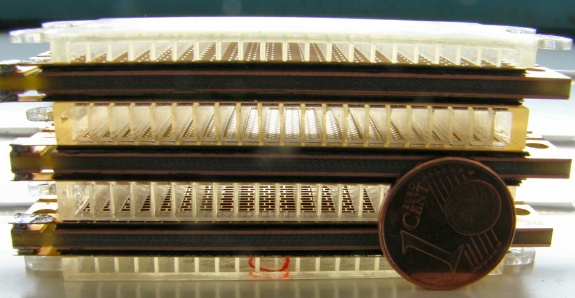A chronic issue with fuel cells is that, in order to deliver a high enough power output, a lot of them have to be connected in series. Traditionally that has meant stacking the fuel cells – creating a structure consisting of several metal plates, each containing one channel for air and one for hydrogen - but this makes the fuel cell stack quite heavy.
Researchers from the Fraunhofer Institute for Reliability and Microintegration IZM, together with colleagues at the Technical University of Berlin, have developed a fuel cell that weighs only 30 grams yet has an output of 12 watts.
The high power density of 400 watts per kilogram has so far only been achieved in considerably larger systems weighing several hundred grams. The fuel cell is light enough to power a twenty-centimeter helicopter. It is being developed by the participants in an EU project, and will be used in future for missions such as locating victims trapped in fallen buildings, monitoring traffic or investigating tracts of land that have been contaminated by chemical accidents.

How did the researchers manage to reduce the weight of the fuel cells so dramatically?
“We use very thin, planar fuel cells,” explains IZM team leader Dr. Robert Hahn. “We have replaced the metal plates by lightweight plastic spacers.”
The researchers have no need for an additional pump to provide an adequate air supply: The wind generated by the helicopter’s rotor blades goes directly into the air vents. The scientists had to devise a solution for the hydrogen supply, too, as a conventional pressure tank would be too heavy for the helicopter.
“We have built a small reactor containing solid sodium borohydride. If we inject water, this produces hydrogen,” declares Hahn.
Since the helicopter always needs about the same amount of energy to stay in the air, the reactor always has to produce a consistent quantity of hydrogen. The researchers have already built a prototype of the lightweight fuel cell.
The helicopter is expected to take off, powered by this fuel cell, in just over a year’s time. For the scientists, the next step is to adjust the hydrogen production to cater for fluctuating energy requirements. There are plenty of applications for such a fuel cell: It could be used as a charging point for laptop computers and cell phones, for instance.





Comments